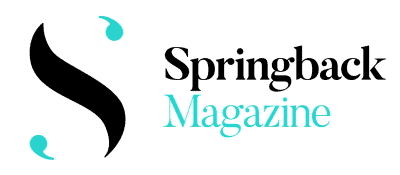Welcome to the Festival d’Avignon: 38 degrees in the shade (if you can find any), crowded restaurants, millions of flyers on the ground, and posters of varying degrees of interest. You meet people you haven’t seen for ages, and others you hoped you’d never see again. And then there are those titles of works that are so revolting because they perpetuate clichés. A nod to the company that named its play ‘Darling, I’ve cheated on you (and that’s not the worst of it)’ with an editorial that reads: ‘He’s a racist and his wife is cheating on him with an illegal immigrant.’ Get the picture? Ah, Avignon, where theatrical fantasy sometimes meets the comedy of the absurd, and where we wonder if our presence there isn’t a performance in itself.
Now among the world’s largest arts festivals, the Festival d’Avignon was founded in 1947 at the instigation of Jean Vilar, and was originally an artistic utopia, a revolt against the elitist and rigid theatre of the time. Today, that utopia has been transformed into a vast fair where the best and (sometimes) the worst of contemporary creation rub shoulders. The IN, where the company is paid by the festival to come, with its exorbitant prices and grandiloquent creations, this year offers a tiny programme of choreography that is often dated and hardly revolutionary. The OFF, where companies can be prepared to ruin themselves to gain visibility, with over 1,600 shows staged in theatres or private garages, often takes place in extremely precarious conditions, both technically and financially, for the artistic companies. Every summer, the streets of the city are transformed into a veritable cultural anthill, where we often wonder (if not every hour) if this liberal and ultra-competitive model isn’t heading for disaster.
So welcome to Avignon, where fiction meets reality, and where art juggles dream and survival. For this 2024 edition, the IN opened its doors in the majestic courtyard of the Palais des Papes with the latest creation by Angélica Liddell, known for her provocative works. True to her reputation, she is quick to criticise the profession of critic (charming attention). And the political context doesn’t help us to approach this edition calmly. With the dissolution of the French National Assembly and the worrying rise of fascism, this fiery opening promises an edition marked by confrontation and reflection, faithful to art as a mirror of our troubled society.
(My selection below is my own choice, and not at all exhaustive.)
At the Belle Scène Saint-Denis, the Dance Programme #1
Like every year, for the last 12 years it seems, the Théâtre Louis Aragon in Tremblay, just outside Paris, has migrated to Avignon to offer a panorama of diverse creations. The shows are never longer than 30 minutes, without lighting, on a small shaded stage in the courtyard of the theatre la Parenthèse. These are far from ideal conditions for presenting projects that have often matured over several weeks, or even months. Be that as it may, the intention is laudable and, in these troubled times, any opportunity to perform is precious. The entire network of the French choreographic sector is religiously present, so much so that one wonders if civil society is invited. Ah, the beauty of consanguinity!
The first morning programme of this first week opens at 10am from 2 to 6 July.
AC/DC by Agathe Pfauwadel and Aëla Labbé
Agathe Pfauwadel and Aëla Labbé present an extract from the creation AC/DC. Through dance, theatre and installation, we seem to be plunged into the mind of Jules Lebel, a 19-year-old dancer with autism. These are masterfully used as choreographic tools by the dancer and his acolyte, the performer Stéphane Imbert. Skilfully avoiding sentimentality, this moment lived in the present offers us a way of being in the world in all its flamboyance. We can only applaud this performance, which lights up the stage despite the constraints.

Jusqu’au moment où nous sauterons ensemble by Mélanie Perrier
With Jusqu’au moment où nous sauterons ensemble, choreographer Mélanie Perrier tackles the question of collective action. In an increasingly fragmented social climate, how can we account for the impossibility of uniting? Utopia would have us leap into new, resolutely humanist spaces, but we all know the limits of the human leap, which is no more than 2m45 (and I’m talking about a world record). This limit depicts our state of the world (sorry for the pessimism). The gestural decomposition of the jump brings together six performers dressed in transparent pale blue tulle costumes. Together, they strive to make common ground through play, challenge and collective impulse. It’s spare and sober, perhaps a little too solemn, even pious. It achieves its goal without giving us any hope for the future.
M&M by Amala Dianor
Amala Dianor, who needs no introduction in France, unveils his latest creation M&M to the spellbinding music of Awir Leon. The show features an encounter – an attempt at cross-fertilisation – between a contemporary dancer (Marion Alzieu) and a dancehall dancer (Mwendwa Marchand). I find myself immersed in a world of stereotypes, like walking into a saloon straight out of an old western film, where every character feels more like a cardboard cutout than a real person.
In 2024, it seems always anachronistic to try, with contemporary dance and hip-hop, to demonstrate a link between two aesthetics, histories, codes and bodies that seem so different. The dancers seem to discover each other, without really understanding – and consequently the show struggles to propose an imaginary world, or a new way of looking at this world. Despite the dancers’ undeniable commitment, the outcome looks somewhat clumsy, and clichéd.
Vive le sujet ! Tentatives – Série 1
Imagine a garden where virgins, far from praying, embark on hazardous artistic experiments. Welcome to the Jardin de la Vierge, where the performance series ‘Vive le sujet!’ transforms this lush setting into a playground for creative minds in search of inspiration. Initiated by the Société des auteurs et compositeurs dramatiques (SACD), this event encourages playwrights and artists to come up with short, multi-disciplinary works.











